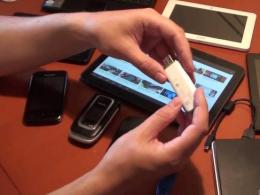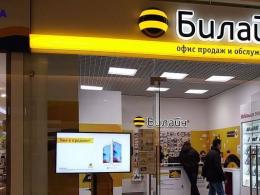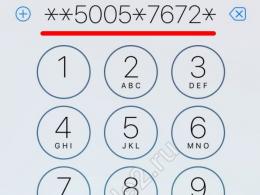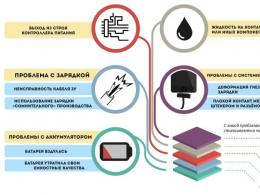Do-it-yourself color music on microcircuits. Do-it-yourself color music on LEDs: working schemes
Most people listen to music with great pleasure, using various equipment for this. Often there is a desire to enhance its positive impact. One of these methods is color music on diodes, made in the form of special attachments. With the help of diodes, sound effects take on a completely different color, having a positive effect on the emotional mood of the listeners. Such electronic equipment is usually purchased ready-made, but if you have a circuit, certain knowledge and skills, it may well be made by yourself.
The principle of operation of color music on LEDs
The basis of the operation of each scheme of the color and music installation is the physical principle associated with the frequency transformation of music. Further, it is transmitted through separate channels and controls the connected lighting devices. This chain connects the main musical characteristics with color elements that correspond to each other and work in mutual connection. This principle serves as the basis for all radio-electronic circuits from the field of color music, including those created independently.
Most often, the color scheme includes at least three different colors, for example, red, green and blue. There are many combinations created by mixing them, so if the circuit is put together properly, it is sure to give the desired effect. To achieve it, the signal is divided and works at low, medium and high frequencies Oh. Separation is carried out with the help of special LC and RC filters installed in the common chain of the LED color and music system.
There are certain parameters used when setting up filters that operate in their own narrow frequency band and pass vibrations only in this segment of the sound range:
- LPF - low-pass filters. The frequency of oscillations passing through them reaches 300 Hz, and the light source must be red.
- FSF - mid-range filters. Capable of transmitting vibrations with a frequency of 250 to 2500 Hz, the color of the light source is yellow or green.
- HPF - high-pass filters that pass more than 2500 Hz and work in conjunction with a blue light source.
The divided frequencies of the circuit slightly overlap each other, which makes it possible to obtain a variety of color shades in the process. The primary colors listed above are not of fundamental importance; it is quite possible to replace them with others - the most suitable for a particular situation. In some cases, the end result greatly exceeds expectations, thanks to the use of non-standard color solutions.
Schemes simple and complex
Acquaintance with color music opens the simplest scheme. As a rule, such devices use the minimum number of elements - only one LED, and one resistor and one transistor each. Power is supplied through a constant current source at 6-12V.

When assembled, color music on LEDs is an amplifying stage, supplemented by a common emitter. The main effect is exerted by a signal with varying amplitude and frequency arriving at the base. When the frequency exceeds the set threshold value, the transistor opens. At this moment, the LED receives power and immediately lights up.
Such simple color music can be assembled with an application that requires an appropriate transistor. A significant drawback of this assembly is the direct relationship between the sound level and the flashing frequency. LED light bulbs. That is, the most efficient system will work with the support of only one, the most appropriate sound level. At a lower volume, the flashing will occur less frequently, and at high level sound, the light will become constant.
This disadvantage is easily removed by a three-channel sound transducer, which is used in more complex schemes. In this case, a 9 volt power supply is required, which ensures the normal glow of the bulbs in the corresponding channels.

To assemble a circuit of three amplification stages, it is necessary to stock up on KT315 transistors or their KT3102 analogues. The load is LEDs of different colors. The amplifying function is performed by a step-down transformer, with the help of resistors are regulated led flashes, and the aforementioned filters pass various frequencies through them.
This scheme of color music on LEDs can be further improved. First of all, this concerns the brightness of the glow, added by including small 12-volt incandescent bulbs in the chain. In this case, the circuit is supplemented with control thyristors, and the entire device is powered through a transformer.
Using LED strips
The color music circuit with RGB LED strip operates on a voltage of 12 volts. It best combines the main parameters of conventional options. This device can work in different modes- as a lighting device or color-musical accompaniment.

The inclusion of the color music mode is performed using a microphone, in a non-contact way. In the case of switching to lighting mode, all available LEDs simultaneously run at full power. The transition from one state to another is performed by a special switch, for which a separate board is provided.
The order of operation of this scheme is as follows:
- The main signal comes through a microphone that performs the transformation of the sound vibrations of the phonogram. Since the strength of the received signal entering the color-music circuit is insignificant, it must be amplified. For this purpose, a transistor or a special amplifier is used.
- Next, the automatic regulator is launched, which keeps the sound vibrations within the established limits. At the same time, the sound is prepared for further processing.
- With built-in filters, the signal is divided into three components, each of which has a separate frequency range.
- At the end of all actions, the amplification of the current signal is performed after its preliminary preparation using transistors operating in the key mode.
Main parts and components
Before you make equipment for color music with your own hands, you need to prepare all the parts and components in advance. In the circuit, only fixed resistors with a power range of 0.125-0.25 ohms should be used. Cases of circuit elements are marked with special stripes indicating the resistance value. Additionally, trimming resistors R7, R10, R14, R18 are used. They can be of different types, but the only requirement for them is the ability to mount on the board used for assembly.


Capacitors are designed for operating voltages of 16V and above. Any type of these devices can also be used in color music. If it is impossible to find a capacitor with the desired parameters, it is allowed parallel connection two others, with smaller capacities, summing up the required indicators.
The made color-musical scheme cannot do without a diode bridge. Usually it is calculated for an operating current of up to 200 mA and a voltage of 50 volts. In the absence of a ready-made device, you can use several separately taken rectifier diodes and mount them for convenience on a separate small board.

The primary colors of the LEDs are red, green and blue. Their total number is determined on the basis of one channel - 6 pieces. You will need standard transistors with any designation index. The voltage regulator with the article number 7805 is calculated for 5V, and the 9V device has the designation 7809. With experience, color music is assembled on the Arduino board and LEDs.
Compound music center with color music is carried out various types connectors with three pins. The last part of the assembly is the transformer, which must have the most suitable voltage parameters.
Color music equipment in the car
Color music equipment is used not only at home. Many car owners install them together with radio tape recorders. If necessary this system works as interior lighting. For the device of this type of lighting, LEDs are also used, placed on the ceiling in the "Starry sky" configuration. This option is often used not only in cars, but also in the construction of suspended ceilings in apartments and private houses.

This placement scheme, when solving the problem of how to make color music from LEDs, can be used in different ways. First of all, this is a uniform distribution of LEDs in a certain configuration or in any form. Light bulbs used in the circuit may have different luminous power. That is, the stars imitated by LEDs are bright and dim. The effectiveness of the backlight largely depends on the background of the ceiling covering the interior of the car or apartment.
In the case of installing a do-it-yourself color music system on LEDs, during the installation process you will have to drag the ceiling. In this regard, it is necessary to carefully select the necessary parts and then carefully assemble them into a single whole. In case of any violations, you will have to disassemble the interior coating and correct errors. Therefore, at the end of the assembly, it is necessary to check the operability of the installed equipment.
After the color music is assembled, the LEDs are inserted into the ceiling holes and fixed with reverse side with glue. It is also necessary to think over in advance the reliable fastening of the voltage stabilizer and the switch.
In this article we will talk about color music. Probably, every novice radio amateur, and not only, at one time had a desire to collect color music. What it is, I think, is known to everyone - to put it simply, this creation visual effects changing to the beat of the music.
That part of the color music that emits light can be performed on powerful lamps, for example, in a concert installation, if color music is needed for home discos, it can be done on ordinary 220 volt incandescent lamps, and if color music is planned, for example, as computer modding, for everyday use, it can be done on LEDs.

Recently, with the advent of LED strips on sale, color and music consoles using such led strips are increasingly being used. In any case, for the assembly of Color Musical Installations (CMU for short) a signal source is required, it can be a microphone with several amplifier stages assembled.

Also, the signal can be taken from line out devices, sound card computer, from the output of an mp3 player, etc., in this case you will also need an amplifier, for example, two cascades on transistors, for this purpose I used KT3102 transistors. The preamplifier circuit is shown in the following figure:

Preamplifier - Schematic
The following is a diagram of a single-channel color music with a filter, working in conjunction with a preamplifier (above). In this circuit, the LED blinks under the bass ( low frequencies). To match the signal level in the color music circuit, a variable resistor R6 is provided.

There are also simpler color music circuits that any beginner can assemble, on 1 transistor, and besides, they do not need a preamplifier, one of these circuits is shown in the picture below:

Color music on a transistor
The pinout diagram of the Jack 3.5 plug is shown in the following figure:

If for some reason it is not possible to collect preamplifier on transistors, you can replace it with a transformer connected as a step-up. Such a transformer should produce voltages on the windings of 220/5 Volts. The winding of the transformer with a smaller number of turns is connected in a sound source, for example, a radio tape recorder, in parallel with the speaker, while the amplifier must produce at least 3-5 watts of power. Winding with big amount turns is connected to the color music input.

Of course, color music is not only single-channel, it can be 3, 5 or more multi-channel, when each LED or incandescent lamp flashes when reproducing the frequencies of its range. In this case, the frequency range is set by using filters. In the following scheme, three-channel color music (which I myself recently collected) capacitors are used as filters:

If we wanted to use in the last circuit not individual LEDs, but an LED strip, then the current-limiting resistors R1, R2, R3 should be removed from the circuit. If RGB tape or LED is used, it must be made with a common anode. If you plan to connect long LED strips, then powerful transistors mounted on radiators should be used to control the strip.

Since the LED strips are designed for 12 volts, respectively, we should raise the power in the circuit to 12 volts, and the power should be stabilized.
Thyristors in color music
So far, the article has only talked about color-music devices based on LEDs. If there is a need to assemble a CMU on incandescent lamps, then thyristors will need to be used to control the brightness of the lamps. What is a thyristor anyway? This is a three-electrode semiconductor device, which accordingly has Anode, Cathode And Control electrode.

KU202 Thyristor
The figure above shows the Soviet thyristor KU202. Thyristors, in case it is planned to be used with a powerful load, must also be mounted on a heat sink (radiator). As we can see in the figure, the thyristor has a thread with a nut and is mounted similarly to powerful diodes. Modern imports are simply equipped with a flange with a hole.

One of these thyristor circuits is shown above. This is a three-channel color music circuit with a step-up transformer at the input. In the case of selecting analogs of thyristors, one should look at the maximum allowable voltage of thyristors, in our case, for KU202N it is 400 volts.

The figure shows a similar scheme of color music given above, the main difference in the lower scheme is that there is no diode bridge. Also, color music on LEDs can be built into system unit. I assembled such a three-channel color music with a preamplifier in a case from a sidirom. In this case, the signal was taken from the sound card of the computer using a signal divider, to the outputs of which active acoustics and color music. Signal level adjustment is provided, both general and separately by channels. The preamplifier and color music were powered from the 12 Volt Molex connector (yellow and black wires). The schemes of the preamplifier and three-channel color music for which they were assembled are given above. There are other color music schemes on LEDs, for example this one, also three-channel:

Color music on 3 LEDs - scheme
In this circuit, unlike the one that I collected, an inductance is used in the medium frequency channel. For those who want to assemble something simpler first, I give the following scheme for 2 channels:

If you collect color music on lamps, you will have to use light filters, which, in turn, can be both home-made and purchased. The figure below shows the filters that are commercially available:

Some lovers of color and musical effects assemble devices based on microcontrollers. Below is a diagram of four-channel color music on the AVR tiny 15 MK:

The Tiny 15 microcontroller in this circuit can be replaced with tiny 13V, tiny 25V. And at the end of the review, on my own behalf, I want to say that color music on lamps loses in terms of entertainment to color music on LED, since lamps are more inertial than LEDs. And for independent repetition, you can recommend this
Additionally
-
IN: I bought a tape, it has contacts G, R, B, 12. How to connect?
A: This is the wrong tape, you can throw it awayIN: The firmware is loaded, but the error “Pragma message…” crawls out in red letters.
A: This is not an error, but information about the version of the libraryIN: What should I do to connect a tape of my own length?
A: Calculate the number of LEDs, before downloading the firmware, change the very first NUM_LEDS setting in the sketch (the default is 120, replace it with your own). Yes, just replace and that's it!IN: How many LEDs does the system support?
A: Version 1.1: maximum 450 pieces, version 2.0: 350 piecesIN: How to increase this amount?
A: There are two options: optimize the code, take another library for the tape (but you have to rewrite part). Or take Arduino MEGA, it has more memory.IN: What capacitor should be used to power the tape?
A: Electrolytic. Voltage 6.3 volts minimum (more possible, but the conder itself will be larger). Capacitance - at least 1000 microfarads, and the more the better.IN: How to test tape without Arduino? Does the tape burn without Arduino?
A: The address tape is controlled by a special protocol and works ONLY when connected to a driver (microcontroller) -
IT IS POSSIBLE TO ASSEMBLE A CIRCUIT WITHOUT A POTENTIOMETER! To do this, the POTENT parameter (in the sketch in the settings block in the settings signal) assign 0. The internal reference source of the reference voltage of 1.1 Volts will be used. But it will not work with any volume! For the system to work correctly, you will need to adjust the volume of the incoming audio signal so that everything is beautiful, using the previous two settings.
-
Version 2.0 and above can be used WITHOUT IR REMOTE, the modes are switched by the button, everything else is configured manually before loading the firmware.
-
How to set up another remote?
For other remotes, the buttons have a different code, to determine the button code, use the sketch IR_test(versions 2.0-2.4) or IRtest_2.0(for versions 2.5+), is in the project archive. The sketch sends the codes of the pressed buttons to the port monitor. Further in the main sketch in the section for developers there is a define block for remote control buttons, just change the codes to your own. You can calibrate the remote control, but honestly it’s already completely lazy. -
How to make two columns of volume per channel?
To do this, it is not at all necessary to rewrite the firmware, it is enough to cut a long piece of tape into two short ones and restore broken electrical connections with three wires (GND, 5V, DO-DI). The tape will continue to work as one piece, but now you have two pieces. Of course, the audio plug must be connected with three wires, and the mono mode (MONO 0) is disabled in the settings, and the number of LEDs must be equal to the total number on the two segments.
P.S. Look at the first diagram in the diagrams! -
How to reset the settings that are stored in memory?
If you played around with the settings and something went wrong, you can reset the settings to “factory”. Since version 2.4 there is a setting RESET_SETTINGS, set it to 1, flash it, set it to 0 and flash it again. The settings from the sketch will be stored in memory. If you are on 2.3, then feel free to upgrade to 2.4, the versions differ only new setting which will not affect the operation of the system in any way. In version 2.9 there was a setting SETTINGS_LOG, which outputs the values of the settings stored in memory to the port. So, for debugging and understanding.
We present to you a simple version of the color and music setup, which was assembled in an unusual case. Recently, waste metal profiles 20 × 80 fell into the hands - they were used. In the project, it is assembled on LEDs of different colors 10W (green, blue and red).
Scheme of LED color music
 Scheme of color music LED 3 channels of 10 watts
Scheme of color music LED 3 channels of 10 watts Now the strobe - it is made on the NE555 timer. As for the LED current limiting problem, we use the simplest solution, limiting the current through selected resistors. The resistors are bolted to the profile for heat dissipation and do not overheat at all, they work with a maximum temperature of 60C. The current for each LED was limited to 800 mA.
 LED circuit stroboscope on timer NE555
LED circuit stroboscope on timer NE555 Device design
Toroidal transformer 14V 50VA. The stroboscope on the NE555 together with the MOSFET IRF540 drives two 10W cold diodes. white color through 5W 1.5 Ohm resistors.
 CMU housing made of aluminum
CMU housing made of aluminum All LEDs are mounted on aluminum strips, which are attached to a common aluminum profile. After 3 hours of the test, the structure remains cold.
 CMU on LEDs with a stroboscope in the case
CMU on LEDs with a stroboscope in the case Console controls
Potentiometers for adjusting levels, a microphone input, a power switch, a fuse, a 220 V network socket and an operation mode switch (strobe-TSMU) were installed in the case. The entire body is 700 mm long. The effect is very beautiful and powerful. You can easily illuminate the hall at least 200 square meters.
Color music on RGB LEDs
The peak of popularity of color music installations falls on the 80s of the last century. Now they are almost forgotten. And yet, time does not stand still, and there are new technologies that can revive the "color music" in a new form. Here, for example, three-color RGB LED strips or garlands, they can be of considerable length and even work as lighting fixture. Only, they are usually controlled according to the program, like Christmas tree garlands or advertising, or you can use them to change the color of the lighting in the room. What if it all comes down to music? Imagine a CMU screen the size of a ceiling! But for this you need an appropriate control device.
The figure shows an experimental DMU circuit working with an RGB LED strip or garland. Everything is like a "typical" DMU - three frequency channels, three output keys, to which three colors of an RGB-LED strip (or garland) are respectively connected.
The bandpass filter circuit is made on LM567 microcircuits.
The LM567 chips are PLL tone decoders, they are designed to work in frequency coded control systems and are active filters with a very narrow PLL bandwidth. In this case, in order to cover the entire audio range at least from 50 Hz to 12000 Hz by three bands, it is necessary to expand the PLL capture bands of the microcircuits. The PLL capture bandwidth of the LM567 IC depends on the capacitor at pin 2, the larger its capacitance, the narrower the band. Usually there are several microfarads, but here the capacitances of these capacitors are reduced to 0.047 microfarads, as a result, the capture bandwidth is greatly expanded, and becomes sufficient for using LM567 microcircuits as filters in a color music installation.
Range input voltage AF at the input of the LM567 IC is 20-200 mV, at a frequency corresponding to the filter tuning band, capture occurs. If the frequency of the input signal lies within the band at the output of the IC LM567, the key opens, between pin 8 and the common minus of the power supply.
The input signal is fed to connector X1, the nominal value of the input voltage of the AF should be in the region of 100-300 mV. This voltage is supplied to three regulators on variable resistors R1, R6, R11. These variable resistors during operation of the device set the optimal levels of AF signals for frequency channels, specifically for each playback case, so as to obtain the desired effect.
The band mid frequencies are set by RC circuits connected between pins 5 and 6 of the LM567. You can calculate them using the formula:
F = 1/(1.1*R*C)
F - frequency in kHz, R - resistance in kOhm, C - capacitance in microfarads.
Accordingly, the center frequencies are 150 Hz, 900 Hz, and 9000 Hz. If desired, using the above formula, you can choose other center frequencies of the bands. In this case, you can select not only capacitors, but also resistors (connected between terminals 5 and 6 of the LM567 IC).
Consider the work on the example of a low-frequency channel on A1. While there is no signal with a frequency in the filter bandwidth, or its level is low, at the output, pin 8 A1 will have a logic unit voltage (the output key is closed, the output is pulled up to the power plus through resistor R2). On the elements D1.1-D1.2, a Schmitt trigger is made, its output is the output of the element D1.1, so when the output of A1 is one, the output of D1.1 has a logical zero. The key on the powerful field transistor VT1 is closed and power is not supplied to the R-part of the RGB LED strip.
If there is a AF voltage at input A1 with a frequency in the filter bandwidth, and its level is sufficient to capture, at the output, at pin 8 A1 there will be a logic zero voltage (the output key is open). At the output D1.1 in this case - a logical unit. Transistor VT1 opens and turns on the power of the R-part of the RGB LED strip.
Two other channels work similarly, mid-frequency on A2 and high-frequency on A3, the difference is only in the frequency of the input voltage of the AF.
In principle, the gates of field-effect key transistors can also be directly connected to the outputs of the LM567, but, firstly, the circuit will work in reverse, that is, when there is no signal LED Strip Light will burn, and when it is, it will go out. And secondly, the transistors will overheat, because the process of opening them will be delayed in time, and for a significant time they will be in the middle state when a significant voltage and power drops on the channel. The Schmitt trigger eliminates these problems.
The assembly is done on a breadboard.






